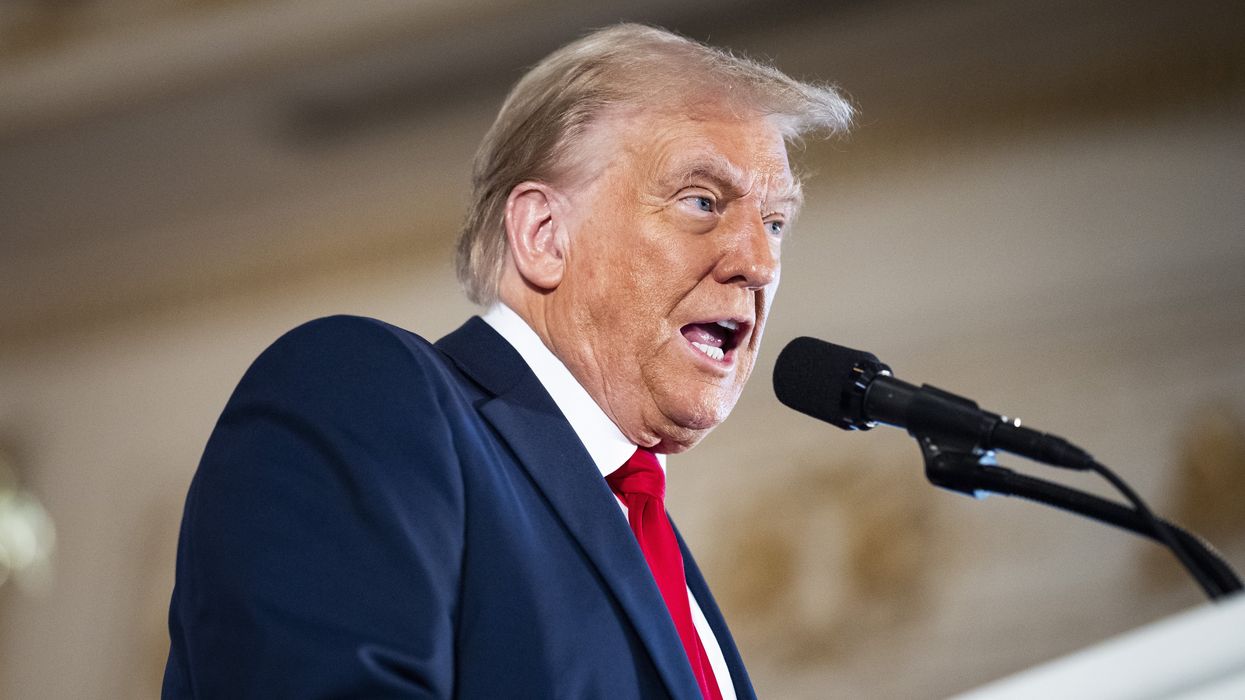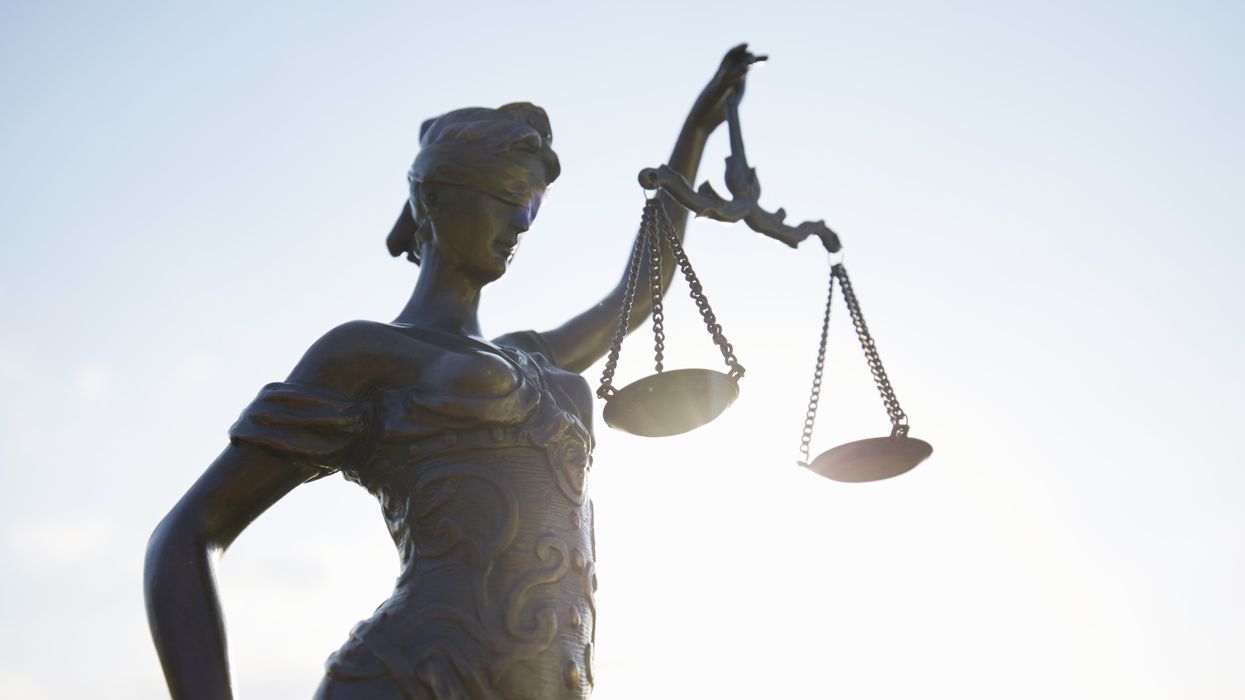Sarat is the William Nelson Cromwell professor of jurisprudence and political science at Amherst College.
America held a free and fair election in which the majority’s preference for Donald Trump was clearly registered and will be respected. Unlike 2016, his election is no Electoral College fluke.
If democracy depends solely on majority rule, democracy was on the ballot and it won. At least for now.
The Associated Press notes: “The Republican candidate won by holding onto his traditional coalition — white voters, voters without a college degree and older voters — while making crucial gains among younger voters and Black and Hispanic men.” In addition, “A majority of voters in this election did not have a college degree, and most of those non-college-educated voters backed Trump. He won 55% of voters without a college degree, compared with about 4 in 10 who chose Harris.”
Voters knew what they were getting when they cast their ballots for Trump. As The New Yorker’s David Remnick explains, “Trump’s reelection, his victory over Kamala Harris, can no longer be ascribed to a failure of the collective imagination. He is the least mysterious public figure alive; he has been announcing his every disquieting tendency, relentlessly, publicly, for decades.”
Leah Wright Rigueur, a history professor at Johns Hopkins University, said the democratic processes won: “The 2024 presidential election was fundamentally, as far as I understand, an example of democracy in action. Trump won the Electoral College. Trump won the popular votes.’”
In the recently completed campaign, Trump did not run as an anti-democratic leader. In the past he has even said that “democracy is the most effective form of government.“
But in his run for the White House, Trump complained that this country does not “have much of a democracy right now.” He presented himself as committed to changing that by being a vehicle for an unfiltered, pure expression of popular sovereignty, impatient with the procedures and niceties of representative government and of the so-called deep state.
Remember “ I alone can fix it ” and “ I am your justice … I am your retribution.” Or this year’s barrage of Trump ads ending: “Harris cares about they/them. Trump cares about you.”
His election signals a turn to what political scientists call “ plebiscitary leader-democracy ” and away from “liberal democracy.” In this form, the leader “engages with the electorate in demagogic rather than the canalization of interests into party political platforms.” Liberal democracy, on the other hand, balances majority rule with representative institutions and respect for minority rights.
Trump’s election suggests that the United States is “heading for a crisis of political legitimacy. In part this is because of the conflict between the modalities of direct democracy (leadership plebiscites and the use of referendums) and that of representative democracy. In plebiscitary democracy, those in government must obey ‘the will of the people’ as interpreted by the leader and his clique.”
That is why Trump and his advisors are claiming that his popular vote victory “changes everything.” Last week, the president-elect crowed that “America has given [the MAGA movement] an unprecedented and powerful mandate.”
As CNN reports, Trump‘s people are “arguing it gives the president-elect confidence to enact his agenda without fear of alienating a broad swath of the country. … ’Winning the popular vote,’” said Jason Miller, one of Trump’s key campaign advisors, “’provides a mandate and a national public confidence to accomplish what he wants to do from the Oval Office.’”
In plebiscitary leader-democracy, the leader governs boldly, not modestly, and is eager to impose his will as the guiding force in government. Sam Whimster, a British democracy activist, explains that “A plebiscitary leader is elected as a strong personality who will override the conventions and if necessary the constitutional rules — in order to get things done. … The state is no longer [seen as] a rational apparatus of delivery and support of the citizen but instead cast as a burden on the preference-choosing citizen.”
Trump’s commitment to a plebiscitary form of rule is echoed in the concerns of millions of his voters who embraced his form of “strong leadership.” Post-election surveys show that Trump voters, not just Harris voters, were concerned about the fate and future of American democrac y.
Half of all those who cast ballots last week “identified democracy as the single most important motivating factor for their vote.” The idea that democracy is under attack also “motivated Trump voters, but in starkly different ways. About one-third of his supporters said democracy was the most important factor for their vote. … About 8 in 10 Trump voters felt electing Harris would bring the country closer to authoritarianism.”
The Boston Globe quotes one Trump voter who said, “’I think it was Thomas Jefferson who said when people fear their government, there is tyranny. We had tyranny under the Biden-Harris machine.’”
Last week’s election results showed, as Yale’s Jason Stanley observes, that “In a democracy, anyone is free to run for office, including people who are thoroughly unsuitable to lead or preside over the institutions of government.” At the same time, when the majority made their choice, they rejected America’s longstanding commitment to the version of democracy in which the power of the majority is tempered by respect for minority and individual rights.
Writing in 2021, Robert Kagan of the Brookings Institution captured the animating spirit of liberal democracy when he said that it depends on the willingness of citizens to “value the rights of others who are unlike you as much as you value your own.” Kagan went on to observe that “Most Trump supporters are good parents, good neighbors, and solid members of their communities. ... [T]hese are normal people.”
But they bought into the Trump campaign’s invitation for them to be “zealous in defense of their own rights and freedoms” and to be “less concerned about the rights and freedoms of those who are not like them.” A majority of the voters worried more about their economic security than about what would happen to migrants, transgendered people or other targets of Trump’s rage.
It is hard to blame them.
But whatever their motives, it is well known that at the birth of the American Republic, the Founders worried about what would happen if what Alexander Hamilton called “ oppressive combinations of a majority ” got their way. In 2024 that is exactly what happened.
And while they are mostly silent today about majority tyranny, in the recent past even Republican devotees of Donald Trump expressed concerns about the tension between majoritarian and liberal democracy. For example, in 2020, Utah Sen. Mike Lee (R) said, “Democracy isn’t the objective; liberty, peace, and prosperity are. We want the human condition to flourish. Rank democracy can thwart that.”
At that time Lee wrote: “The word ‘democracy’ appears nowhere in the Constitution, perhaps because our form of government is not a democracy. It’s a constitutional republic. To me it matters. It should matter to anyone who worries about the excessive accumulation of power in the hands of the few.’
He added: “Government is the official use of coercive force — nothing more and nothing less. The Constitution protects us by limiting the use of government force.”
As the second Trump administration unfolds, Lee’s convictions will be put to the test. Time will tell if he and others like him will stand by the commitment to our “constitutional republic” and his worry about “the excessive accumulation of power in the hands of the few” or trade that commitment in for plebiscitary democracy now that his preferred leader has been returned to power.
In the meantime, Americans will be receiving a civics lesson in the wisdom of the Founders and their commitment to liberal democracy.



















